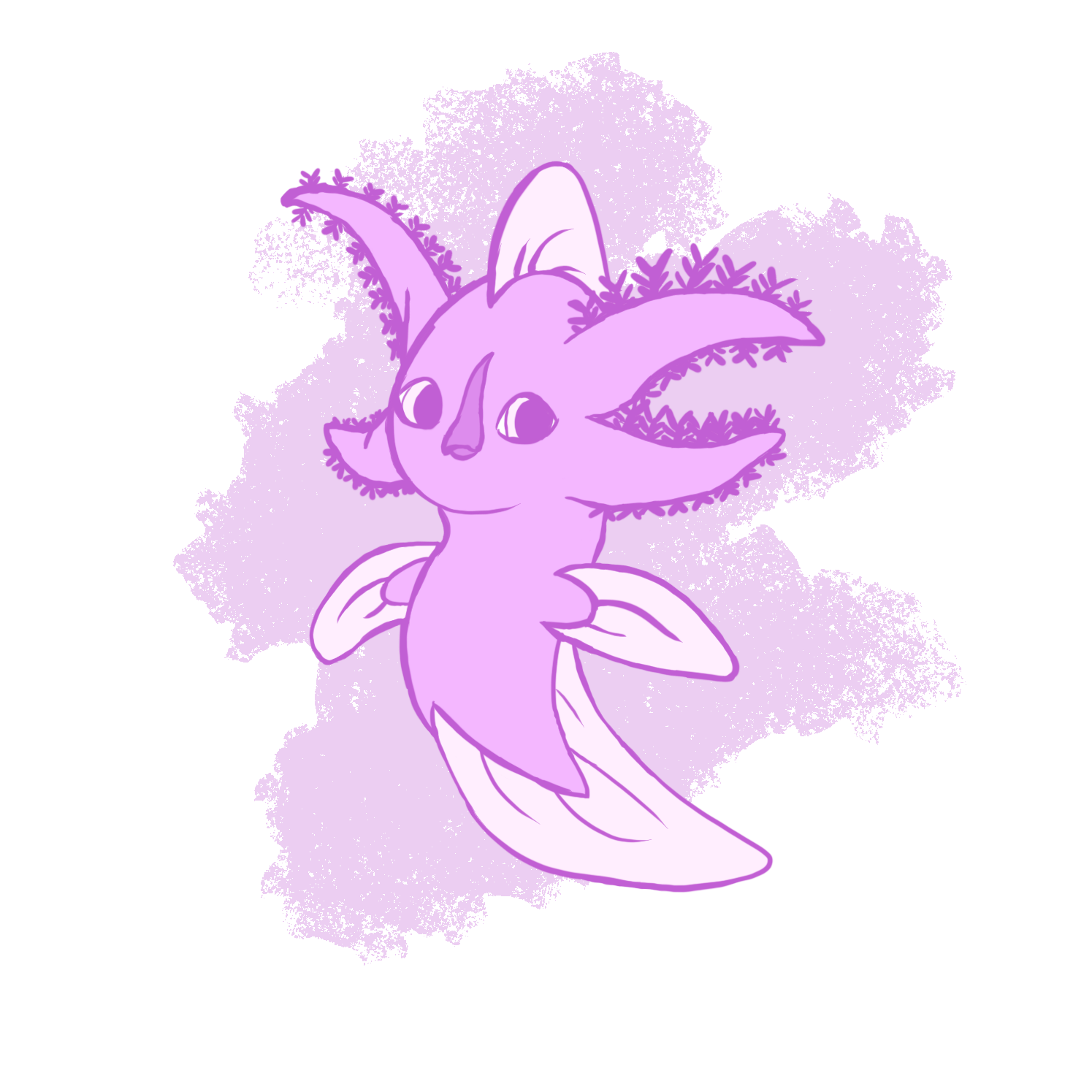Ixilit

By human standards, ixilit are bizarre, fish-like creatures. They have two arm fins, a tail fin, gills resembling tentacles, large eyes, and a small squid-like beak. Their salamander-like skin can come in different pastel hues, with pink, blue, and yellow being the most common colors.
Ixilit live deep under the ocean and rarely interact with surface dwellers. Little is known about them, but they seem friendly enough.
Game Mechanics
Abilities
Vestigial Fins. Ixilit fins, being vestigial, are clumsy and weak. Ixilit have the lowest Strength and Dexterity scores of any race. A typical ixilit isn't even strong enough to lift their own body weight.
Open Minds. Most of an ixilit's strength comes from its mind—literally. They rely on telekinetics for moving about and telepathy for communication. Their superb spatial reasoning in particular contributes to their above-average Intelligence and Wisdom scores.
Alignment
Ixilit society is cooperative. They tend to be good or neutral, and are rarely chaotic or lawful.
Age
Ixilit take around 25 years to reach maturity. Your old age threshold is 150 years with an aging rate of 5 years.
Language
You are proficient in Ixian. Ixian is not vocalizable, but you can speak it using your Telepathy trait.
Speed
You have a base swim speed of 20 feet. Since your fins can't support your weight on land, you don't have a walk speed.
Darkvision
Your large eyes are adapted for the darkness of the deep sea. You have darkvision (60 ft.).
Ixilit
Size
SmallSpeeds
Swim 20 ft.Old Age Threshold
150 yearsTraits
Alien Influence. Your creature type is Humanoid, but you also register as an Aberration to abilities that detect aberrations.
Hold Breath. While out of water, you can hold your breath for 10 minutes.
Water Breathing. You can breathe only underwater.
Dormant State. Instead of falling unconscious when you sleep, you go into a dormant state. In this state, you are incapacitated, are vulnerable to psychic damage, and your only sense is mindsense (30 ft.). You can end the dormant state at the end of your turn (no action required).
Telepathy. You can communicate telepathically with creatures you can see out to a range of 60 feet. This telepathy is two-way, but requires a common language.
Empath. You are very sensitive to the psychic energy given off by strong emotion. You have advantage on Insight checks against creatures that are within range of your Telepathy trait. Additionally, you can cast detect thoughts once with this trait without components, using Intelligence as your spellcasting ability. You regain the ability to cast the spell in this way again when you finish a long rest.
Psychic Arms. You don't have arms, but you can manipulate objects with your mind as if you had three arms. Each arm can do anything a normal hand can do within a range of 30 feet, including receiving tactile input. You can't move an object more than 30 feet at once with the Interact action.
You don't drop something you're holding with a psychic arm unless an effect specifically says you do. For example, being incapacitated doesn't cause you to drop something, but being unconscious does.
Your psychic arms don't make physical contact, so they can't be used to deliver spells with a range of touch or similar effects. You can use a fin for such effects. You also can't use a psychic arm to make an opportunity attack, unless the arm is holding a weapon and a creature leaves the weapon's reach.
When you use a psychic arm to perform a task that would normally require a Strength- or Dexterity-based ability check or attack roll, use your Intelligence instead. Your Intelligence score is capped at 3 for this purpose. If you use two psychic arms for the task, your Intelligence score is capped at 4 instead, and if you use three psychic arms, your Intelligence score isn't capped.
Water Bubble. You can use one of your Psychic Arms to maintain a bubble of water around your head, allowing you to breathe in air.
Levitation. At the start of each of your turns, you can use one of your psychic arms to give yourself a hover speed of 20 feet until the start of your next turn. This hover speed has an altitude limit of 5 feet. If your altitude exceeds 5 feet while using this hover speed, you fall at a rate of 60 feet per round until your altitude is 5 feet unless you have another means of staying aloft.